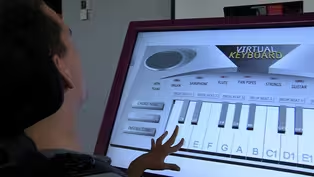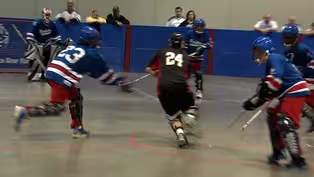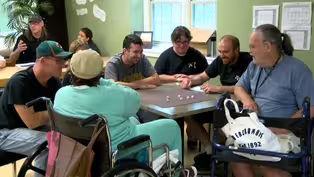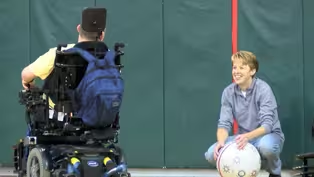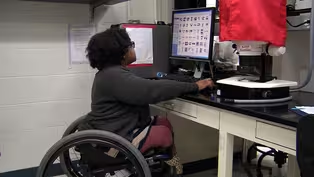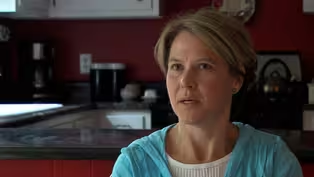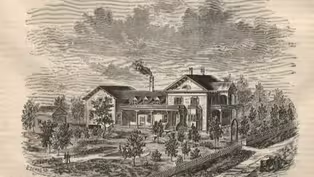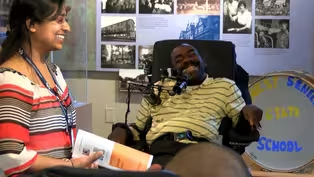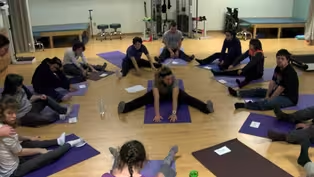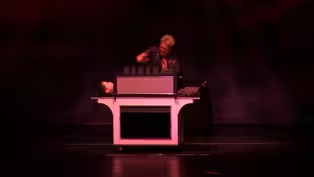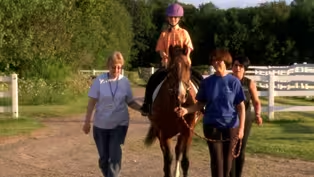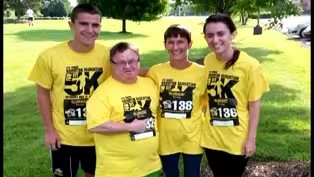Move To Include
Speech pathologist
Special | 2m 25sVideo has Closed Captions
How speech pathologists help children with communicative disorders.
We visit CP Rochester Augustin Children's Center to learn about speech pathologists and what they do to help children with communicative disorders.
Problems playing video? | Closed Captioning Feedback
Problems playing video? | Closed Captioning Feedback
Move To Include is a local public television program presented by WXXI
Move To Include
Speech pathologist
Special | 2m 25sVideo has Closed Captions
We visit CP Rochester Augustin Children's Center to learn about speech pathologists and what they do to help children with communicative disorders.
Problems playing video? | Closed Captioning Feedback
How to Watch Move To Include
Move To Include is available to stream on pbs.org and the free PBS App, available on iPhone, Apple TV, Android TV, Android smartphones, Amazon Fire TV, Amazon Fire Tablet, Roku, Samsung Smart TV, and Vizio.
More from This Collection
Homework Hotline, designed for grades 4 through 12, provides the tools students need to succeed both in and out of the classroom, & supports academic achievement across a variety of learning standards. This collection is specifically curated by Move to Include & presents in-depth stories & profiles of individuals & organizations who are working to make our community inclusive & accessible for all.
Video has Closed Captions
How touch screen technology is making learning more accessible for all students. (2m 58s)
Video has Closed Captions
See how floor hockey is helping these players both in and out of the rink. (2m 16s)
Video has Closed Captions
A program that specializes in working with individuals suffering from traumatic brain injury. (4m 6s)
Video has Closed Captions
Recreational activities through adaptive sports and inclusive recreation. (5m 27s)
Video has Closed Captions
Genomics and how scientists use computers to analyze data. (2m 55s)
Video has Closed Captions
Kerrie Giesen tells us what it is like to have Multiple Sclerosis and how her life has changed. (3m 11s)
Video has Closed Captions
Many people with disabilities were sent to live in institutions away from their families. (2m 28s)
Video has Closed Captions
Charles uses eye gaze technology and a device called a Dynavox to help him communicate. (2m 21s)
Video has Closed Captions
Using magic tricks to help therapists provide better care to people with disabilities. (4m 24s)
Video has Closed Captions
Equine assisted therapy. Learn about the benefits of working with horses. (2m 37s)
Video has Closed Captions
We ask Pat and his family how Down Syndrome has impacted their lives. (2m 40s)
Providing Support for PBS.org
Learn Moreabout PBS online sponsorshipGood job.
Come on, let's go.
Let's go.
Let's go.
I have your chair right here.
Hey, who are you?
My name is Annabelle.
Your name is Annabelle Nice job Annabelle.
Very good.
My name is Kimberly Miller.
I am a speech language pathologist here at TPI Rochester as a guest in Children's Center and speech pathologist, does communicative disorders.
And so I work with students here at 3 to 5 years old.
I am in charge of assessing, diagnosing and implementing treatment for speech and language disorders for my students that might be helping them use their language in their words better.
It might be helping them say certain speech sounds better back back here.
I think that it might be giving them an augmentative or an alternative communication method.
Could be picture symbols.
It could be using a tablet device to communicate or sign language.
And I have these colors.
What about this one?
What color is this one?
This one is blue.
Now, I'll get right in there.
Good.
Use your thumb.
Good job.
Give me five yellow.
Right.
Yellow turkey.
All right, let's make one yellow turkey.
It's important to know that I work with a variety of different students.
Some of my students have a hearing impairment.
Some of my students have other abilities and disabilities that jive.
Right.
And your turkey could coloring using your crayon.
I think it's important to know that even though somebody is communicating differently, they might sound different, they might use the wrong words, they might use a tablet or a different way to communicate.
They still have thoughts and feelings that they want to express to.
And there's still somebody that you can have a conversation with which one way you pick.
Are you going to pick a big one or are you going to pick a little one and color big, Big a big line, right.
You.
Support for PBS provided by:
Move To Include is a local public television program presented by WXXI
